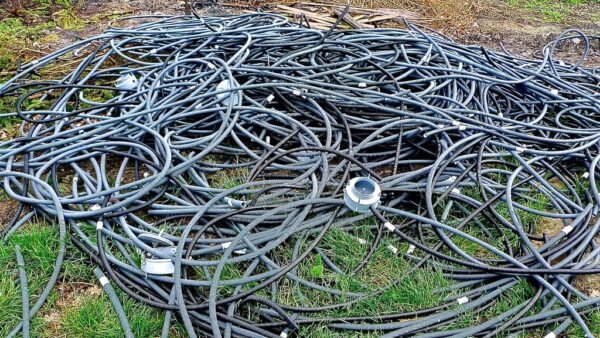R$ 0,50; R$ 6,00; and R$ 30,00; are the prices paid by illegal junkyards for a kilogram of scrap iron, aluminum, and copper, respectively. It does not matter where the material comes from mailboxes, sewer lids, residential gates, statues, and transmission cables; they are all under constant threat. Despite the damage to public service providers, the enormous work of the police, and the burden on the public coffers, it is the population who suffers the most from this type of theft due to their direct losses and the decrease in the quality of public services. Public lighting and metropolitan trains seem to be the most affected among the public service providers because of the high amount of copper in their energy cables.
This Content Is Only For Subscribers
To unlock this content, subscribe to INTERLIRA Reports.
Rio de Janeiro’s Traffic Engineering Company (CET-RIO) had 427 traffic lights stolen from January to July 2021; the city’s public lighting company (Rioluz) has 30 km of cables – assessed in nearly R$ 100 thousand – stolen every month; the City Hall had 2.520 sewer lids stolen in 2021 until September; and Rio de Janeiro’s Metropolitan Train Concessionaire (Supervia) had 22 km of cables stolen and more than 862 rides stopped in the first eight months of 2021. From January to November 2021, Supervia lost R$ 1,5 million in thefts.
Most cases are perpetrated by low-level criminals, with no association with organized criminal groups, and often homeless and highly addicted to drugs. However, the official figures caught the attention of larger groups, who saw a potential market and engaged in the activities, albeit in an incipient way.
Public Authorities’ Reaction
The situation became quite critical and forced the government to take more incisive measures to fight this crime. On September 1st, the state government announced a task force between Supervia, the Military Police, City Halls in Baixada Fluminense, and the Rio de Janeiro state Transportation Secretariat to curb cable theft. Military Police drones and helicopters started to reinforce the policing along with Supervia’s rail network and cars were placed beside the stations. The patrol circuits were enhanced and started to include streets and places near recycling plants and junkyards to fight the purchase and sale of stolen materials.
A few days later, the state government published a decree regulating the identification of who buys and sells scrap and copper wires through a document issued by the Civil Police. Establishments will have to prove, among other things, the origin of what is purchased and provide receipts for what is sold. The establishment that does not comply will be closed and fined. The decree also established the creation of an information bank where police officers will be able to check the record of all commercial transactions of this type of object.
On November 9th, Rio de Janeiro’s Mayor Eduardo Paes sanctioned a law requiring junkyards to install security cameras. Recorded images must be stored for at least three months for authorities to check who bought or sold the products in reports of irregularities. The law also limited junkyards to only work between 06:00 and 21:00.
Private Initiatives Also Improve Its Security
The private initiative also took a pragmatic approach to the situation. SuperVia started to install underground cabling in its rail network, comprised of the capital and 11 other cities. The project started in the most affected area, Japeri, where 15.474 meters of cables were stolen from January to November, which corresponds to about 55% of the total stolen in the period in the state. By the end of 2022, the underground cabling should cover the entire Japeri branch. Santa Cruz, second in the ranking of thefts, should begin to have underground cables as of 2023.
Rioluz informed in September that it would install 10.000 facial recognition cameras and reinforce cable ducts with concrete in the most vulnerable areas. The company also informed that it would install sensors and alarms in underground cable galleries, and replace copper buoys, which are used to control the entry of water into the galleries, by buoys made of plastic.
Some internet providers are fixing notices on their wiring in Rio de Janeiro’s North Zone streets to warn criminals that their cables do not have copper and, thus, have no financial value. The intention is to reduce the damage caused by criminals who cut fiber optics fiber expecting to find copper.
Future Expectations
It can be seen that there are different fronts to combat the theft of unprotected public and private assets in Rio de Janeiro. Some are more robust, others simpler; each with its own specific cost and implementation timeframe. Effectiveness and efficiency also vary across the spectrum of solutions. The fact is that they all act on the risk and difficulty of committing the crime (policing and reinforcement of the structure) or on attractiveness (replacement by cheaper materials), while public measures that have real and more lasting impacts on security, such as social and economic inclusion, were not taken in consideration.
Likely, the measures adopted will make the theft of public property decrease over time, but it also seems quite clear that the criminals who commit such crimes will migrate to other modalities such as drug trafficking, militias, robberies, or others.




